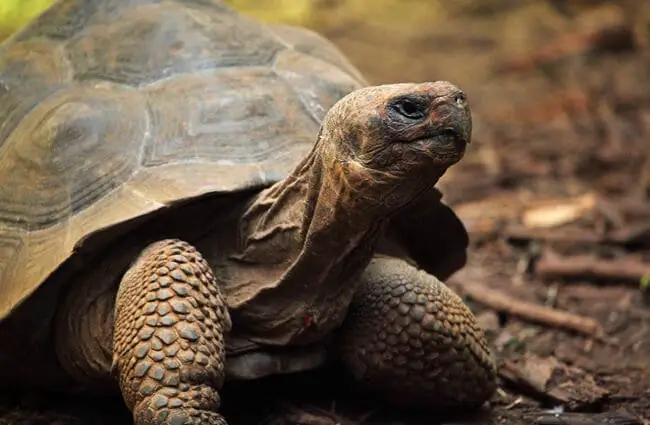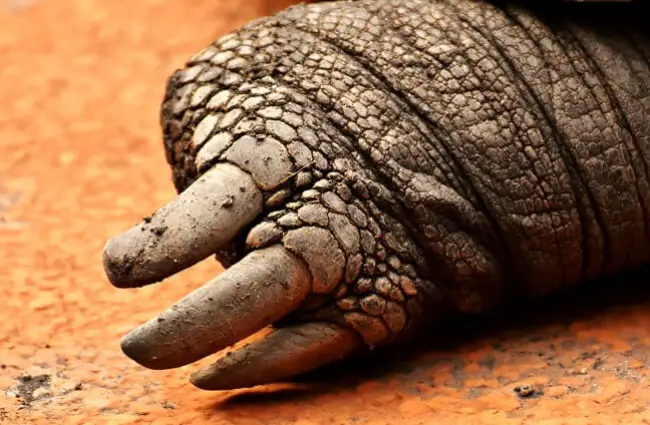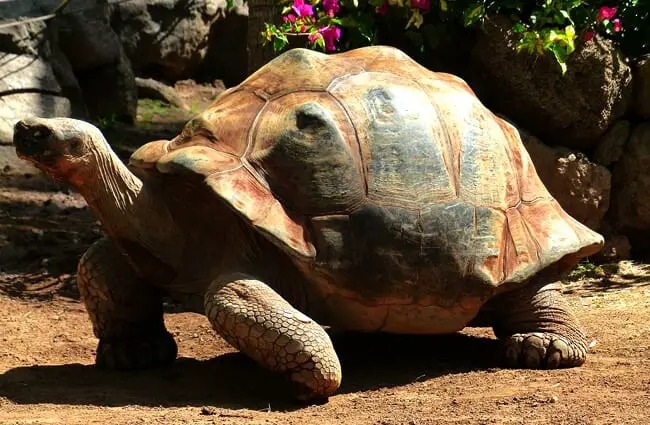The Ancient Wanderers: Unearthing the Secrets of Tortoises
In a world that rushes by, there are creatures that embody patience, resilience, and an ancient wisdom. Tortoises, with their iconic shells and deliberate pace, have captivated human imagination for millennia. These remarkable reptiles are far more than just slow-moving garden dwellers; they are living relics, vital components of diverse ecosystems, and fascinating subjects for anyone curious about the natural world. Join us on a journey to explore the incredible life of the tortoise, from their evolutionary origins to their crucial role in our shared planet.

What Exactly is a Tortoise?
At first glance, distinguishing a tortoise from a turtle might seem like a trivial task, but for a zoologist, the differences are profound. Tortoises are exclusively terrestrial reptiles, meaning they live entirely on land. They belong to the order Testudines, a group that also includes turtles and terrapins, but tortoises possess distinct adaptations for their land-based existence.
- Shell Structure: Tortoises typically have a high-domed, heavy shell, which offers superior protection against terrestrial predators. This shell is a complex structure, formed from fused ribs and vertebrae, covered by scutes made of keratin.
- Legs and Feet: Unlike their aquatic cousins with webbed feet, tortoises sport sturdy, club-like legs with short, strong toes and thick, blunt claws. These “elephantine” limbs are perfectly adapted for walking on varied terrain and for digging burrows.
- Habitat Preference: While turtles often inhabit water, tortoises are found in a wide array of terrestrial environments, from arid deserts to lush forests.
These characteristics define a creature built for endurance, protection, and a life lived at a measured pace, often spanning many decades, even centuries.
A World of Habitats: Where Tortoises Roam
The global distribution of tortoises is surprisingly vast, spanning continents and adapting to an impressive range of climates. Their habitats are as diverse as the species themselves, each demanding unique adaptations for survival.
- Deserts and Semi-Arid Regions: Many species, such as the famous Sulcata tortoise (African spurred tortoise) of the Sahara’s southern edge and the Gopher tortoise of the southeastern United States, thrive in dry, hot environments. They cope with extreme temperatures by digging extensive burrows, which provide refuge from both scorching heat and freezing nights.
- Grasslands and Savannas: Species like the Leopard tortoise of eastern and southern Africa prefer open grasslands, where they graze on a variety of vegetation.
- Mediterranean Climates: European species, including Hermann’s tortoise and the Greek tortoise, are found in scrublands, woodlands, and rocky hillsides, often near coastal areas.
- Tropical and Subtropical Forests: Some tortoises, like the Red-footed tortoise of South America, inhabit humid forest environments, where they find ample food and shelter amongst dense foliage.
- Island Giants: Perhaps the most iconic tortoise habitats are the remote islands, such as the Galápagos and Aldabra atolls, home to the magnificent giant tortoises. These isolated environments allowed them to evolve into colossal forms, filling ecological niches often occupied by large mammals on continents.
Understanding a tortoise’s natural habitat is crucial for appreciating its unique adaptations, from specialized diets to sophisticated thermoregulation strategies.

The Slow Eaters: A Tortoise’s Diet
Tortoises are primarily herbivores, their diets consisting almost entirely of plant matter. However, the specific composition of their meals varies significantly between species, reflecting the vegetation available in their native habitats.
- Grasses and Leaves: The staple diet for many grassland and desert tortoises includes a wide array of grasses, broadleaf weeds, and succulent plants. For example, Sulcata tortoises are voracious grazers, consuming large quantities of fibrous grasses.
- Flowers and Fruits: Forest-dwelling species, such as the Red-footed tortoise, often supplement their diet with fallen fruits, berries, and colorful flowers, which provide additional vitamins and sugars.
- Cacti and Succulents: Desert tortoises are adept at consuming drought-resistant plants like cacti, extracting vital moisture and nutrients from them.
- Calcium is Key: For all tortoises, a diet rich in calcium is paramount for healthy shell and bone development. They often obtain this from calcium-rich plants or by occasionally consuming small amounts of soil or bone fragments.
- Hydration: While some desert species can extract most of their water from food, many tortoises require access to fresh water for drinking, especially in hotter climates.
A balanced diet is fundamental to a tortoise’s health and longevity, a principle that guides both wild foraging and captive care.
Life’s Long Journey: Mating and Reproduction
The reproductive cycle of tortoises is a testament to their ancient lineage, characterized by deliberate courtship and careful nesting. While specific behaviors vary by species, a general pattern emerges.
- Courtship: Mating rituals often involve males pursuing females, sometimes engaging in head-bobbing displays, shell-ramming, or even vocalizations. These interactions can be quite vigorous, with males asserting dominance and attempting to position themselves for copulation.
- Nesting: After successful mating, the female tortoise will seek out a suitable nesting site, typically a sunny, well-drained area. She meticulously digs a flask-shaped nest chamber using her hind legs, a process that can take several hours.
- Egg Laying: Depending on the species, a female may lay a clutch of anywhere from 1 to over 30 eggs. The eggs are typically hard-shelled and spherical or elongated. She then carefully covers the nest, camouflaging it to protect against predators.
- Incubation: Tortoise eggs are left to incubate naturally, relying on ambient soil temperature. For many species, the incubation temperature plays a critical role in determining the sex of the hatchlings, a phenomenon known as Temperature-Dependent Sex Determination (TSD). Warmer temperatures often produce females, while cooler temperatures yield males.
- Hatchlings: After several months, tiny hatchlings emerge, equipped with a small “egg tooth” to break free from their shells. They are immediately independent but face numerous threats from predators during their vulnerable early years. Their slow growth rate means it takes many years for them to reach sexual maturity.

An Ancient Lineage: The Evolution of Tortoises
The story of tortoises is one of profound antiquity, stretching back over 200 million years to the Triassic period. They are among the oldest surviving reptile groups, predating dinosaurs and witnessing countless geological and biological transformations.
- Early Origins: The earliest known ancestors of modern tortoises and turtles, like Odontochelys semitestacea, possessed a partial shell, suggesting the carapace evolved from an expansion of the ribs and vertebrae, eventually fusing to form the complete protective dome we see today.
- The Shell’s Purpose: This remarkable evolutionary innovation, the shell, proved to be an incredibly successful adaptation for defense, allowing these slow-moving creatures to survive in a world teeming with predators. It is not merely an external covering but an integral part of their skeleton.
- Diversification: Over millions of years, as continents shifted and climates changed, tortoises diversified, adapting to a myriad of terrestrial niches. This led to the development of distinct species with specialized diets, behaviors, and physical characteristics suited to deserts, grasslands, forests, and islands.
- Fossil Record: The fossil record provides invaluable insights into their evolutionary journey, revealing ancient giants and smaller forms, and tracing their spread across the globe. Their enduring presence is a testament to the effectiveness of their evolutionary strategy.
Ecosystem Engineers: Tortoises and Their World
Despite their slow pace, tortoises play surprisingly dynamic and crucial roles within their ecosystems. They are often considered “ecosystem engineers” due to their significant impact on their environment and other species.
- Seed Dispersal: By consuming fruits and berries, tortoises inadvertently become vital seed dispersers. Seeds pass through their digestive tracts, often scarified and deposited in new locations with a ready supply of fertilizer, aiding in plant propagation and forest regeneration.
- Burrow Creation: Gopher tortoises, in particular, are renowned for digging extensive underground burrows that can be several meters long and deep. These burrows provide critical shelter from extreme temperatures, fires, and predators for hundreds of other species, including snakes, owls, insects, and small mammals. This commensal relationship highlights their role as keystone species.
- Grazing and Vegetation Management: Large grazing tortoises, such as the Aldabra giant tortoise, act as natural lawnmowers, shaping plant communities by consuming vast amounts of vegetation. This grazing can prevent overgrowth, reduce fire risk, and create open areas beneficial for other species.
- Prey Item: While adults are well-protected, tortoise eggs and hatchlings are a significant food source for a variety of predators, including birds, snakes, raccoons, and other mammals. This contributes to the food web dynamics of their respective habitats.

Tortoises and Humanity: A Shared History
The interaction between tortoises and humans is a complex tapestry woven with threads of cultural reverence, scientific curiosity, and, unfortunately, significant challenges.
Cultural Significance
- Symbolism: Across diverse cultures, tortoises symbolize longevity, wisdom, patience, stability, and even creation. In Chinese mythology, the tortoise is one of the Four Mythical Creatures, representing endurance and good fortune. In Hindu cosmology, the world is sometimes depicted as resting on the back of a giant tortoise.
- Folklore and Fables: The tortoise’s slow and steady nature has inspired countless stories, most famously Aesop’s fable of “The Tortoise and the Hare,” which champions perseverance over haste.
Interaction and Conservation
- Threats: Despite their ancient lineage, many tortoise species face severe threats today, primarily due to human activities.
- Habitat Loss and Fragmentation: Urban development, agriculture, and infrastructure projects destroy and divide their natural homes.
- Poaching and Illegal Pet Trade: Many species are illegally collected from the wild for the exotic pet market or for their meat and shells.
- Road Mortality: Slow-moving tortoises are highly vulnerable to being struck by vehicles when crossing roads.
- Climate Change: Altered weather patterns, increased droughts, and changes in temperature can impact their habitats, food sources, and even the sex ratio of hatchlings.
- Invasive Species: Introduced predators or competitors can decimate tortoise populations, especially on islands.
- Conservation Efforts: Recognizing their ecological importance and vulnerable status, numerous conservation initiatives are underway globally. These include:
- Establishing protected areas and wildlife corridors.
- Implementing breeding programs in zoos and sanctuaries.
- Combating illegal trade through stricter enforcement and public awareness campaigns.
- Researching population dynamics and habitat requirements to inform conservation strategies.
- Educating local communities about the value of tortoises and sustainable coexistence.
Our interaction with tortoises is a critical test of our stewardship of the planet, demanding respect and concerted effort to ensure their survival.

Diving Deeper: Expert Insights and Practical Guidance
Encountering a Tortoise in the Wild: What to Do
A wild tortoise sighting is a special moment, a glimpse into an ancient world. Knowing how to react responsibly is crucial for their safety and yours.
- Observe from a Distance: The golden rule of wildlife encounters is to never disturb the animal. Keep a respectful distance to avoid causing stress or altering its natural behavior.
- Never Pick Up a Tortoise: This is perhaps the most important rule. Picking up a tortoise can cause immense stress. Many species, especially desert tortoises, will urinate as a defense mechanism when startled. This expels vital water reserves, which can lead to severe dehydration and even death in arid environments.
- Road Crossings: If you encounter a tortoise attempting to cross a road and it is safe for you to do so, you may gently assist it.
- Direction Matters: Always move the tortoise in the direction it was already headed, even if it seems to be going the “wrong” way. Moving it back can cause it to attempt crossing again, increasing its risk.
- Gentle Handling: If you must handle it, do so gently, supporting its entire body. Avoid dropping it.
- Safety First: Only intervene if traffic conditions allow for your complete safety.
- Report Injuries or Unusual Sightings: If you find an injured tortoise or one in an unusual location (e.g., far from its known habitat, or a non-native species), contact your local wildlife rescue organization, animal control, or state wildlife agency. Do not attempt to “rescue” or treat it yourself.
- Respect Their Space: Remember that wild tortoises are protected species in many regions. Interfering with them, collecting them, or harming them is illegal and detrimental to conservation efforts.
Caring for a Captive Tortoise: A Zookeeper’s Guide
Caring for tortoises in captivity, whether in a zoo or as a pet, requires a deep understanding of their specific needs to ensure their health and well-being. It is a long-term commitment, often spanning decades.
- Habitat and Enclosure:
- Spaciousness: Tortoises need ample space to roam, forage, and exercise. Small enclosures lead to stress and health issues. Outdoor enclosures are ideal where climate permits, offering natural sunlight and varied terrain.
- Substrate: Use appropriate substrate that allows for digging and burrowing, such as a mix of soil, sand, and coco coir, or cypress mulch for forest species. Avoid dusty or abrasive substrates.
- Environmental Control:
- Temperature Gradient: Provide a basking spot with a heat lamp (species-specific temperatures, often 90-100°F or 32-38°C) and cooler areas for thermoregulation.
- UV-B Lighting: Essential for vitamin D3 synthesis and calcium metabolism. Use a high-quality UV-B bulb that is replaced regularly (every 6-12 months, even if it still emits visible light).
- Humidity: Maintain species-appropriate humidity levels. Desert species need lower humidity, while tropical species require higher levels, often achieved with misting or humid hides.
- Shelter and Enrichment: Offer multiple hiding spots, rocks, logs, and varied terrain to encourage natural behaviors and provide security.
- Water Access: A shallow, sturdy water dish that cannot be easily tipped over is crucial for drinking and soaking.
- Diet and Nutrition:
- Species-Appropriate Diet: Research the specific dietary needs of the tortoise species. Generally, a diet of fresh, diverse greens (e.g., dandelion, collard greens, turnip greens, endive), broadleaf weeds, and some vegetables is appropriate.
- Calcium Supplementation: Dust food with calcium carbonate powder (without D3 if using a good UV-B light, or with D3 if UV-B is insufficient) several times a week. Cuttlebone can also be provided.
- Hydration: Ensure constant access to fresh water. Soaking tortoises in shallow, warm water a few times a week can aid hydration and defecation.
- What to Avoid: Processed foods, dog or cat food (too high in protein), excessive fruit (can cause digestive upset), iceberg lettuce (low nutritional value), and toxic plants (e.g., avocado, daffodil, oleander).
- Health Monitoring and Veterinary Care:
- Regular Checks: Monitor appetite, activity levels, shell condition (look for pyramiding, soft spots, or injuries), clear eyes and nostrils, and healthy droppings.
- Weight Monitoring: Regular weight checks help detect underlying health issues early.
- Veterinary Visits: Annual check-ups with a reptile-specialized veterinarian are essential. They can provide advice on diet, habitat, and perform preventative screenings.
- What to Avoid in Captive Care:
- Overhandling: Tortoises are not cuddly pets; excessive handling causes stress.
- Inappropriate Substrate: Cedar or pine shavings can be toxic.
- Lack of UV-B and Heat: Leads to metabolic bone disease and other serious health problems.
- Small Enclosures: Restricts movement and causes stress.
- Mixing Species: Can lead to aggression, stress, and disease transmission.
- Feeding Inappropriate Foods: High protein, sugary fruits, or processed foods are detrimental.

Fascinating Tortoise Facts
Beyond their basic biology, tortoises hold a treasure trove of intriguing characteristics and behaviors:
- Longevity Champions: Tortoises are among the longest-living vertebrates on Earth. Many species routinely live for 50-100 years, with some giant tortoises exceeding 150 years. The oldest recorded individual, Adwaita, an Aldabra giant tortoise, was estimated to be 255 years old.
- Shell Power: A tortoise’s shell is not just a house; it is an integral part of its skeleton, complete with nerve endings. This means they can feel pressure and pain through their shell.
- Slow and Steady Wins the Race: While their top speed might be a mere 0.3 miles per hour, this slowness is an energy-efficient adaptation, allowing them to conserve resources in harsh environments.
- Desert Survivors: Many desert tortoises possess remarkable adaptations for arid conditions. They can store water in their bladders and extract moisture from the plants they eat, sometimes going months without drinking.
- Temperature-Dependent Sex: For many species, the temperature of the nest during incubation determines the sex of the hatchlings. This natural phenomenon can be impacted by climate change, potentially leading to skewed sex ratios.
- Burrow Architects: Gopher tortoises are master excavators, digging burrows that can extend over 10 meters long and 3 meters deep. These underground havens maintain stable temperatures and humidity, providing refuge for the tortoise and hundreds of other species.
- Nocturnal or Diurnal: Most tortoises are diurnal, meaning they are active during the day, especially in the morning and late afternoon when temperatures are milder. In extremely hot climates, some may become crepuscular, active during dawn and dusk, or even estivate (a form of summer hibernation) to escape the heat.
- Ancient Mariners: The ancestors of giant tortoises on isolated islands like the Galápagos are believed to have arrived by floating across vast stretches of ocean, a testament to their incredible resilience and adaptability.
Conclusion: Guardians of the Ancient Earth
From the arid plains of Africa to the unique ecosystems of the Galápagos, tortoises stand as enduring symbols of resilience and the wonders of evolution. Their slow, deliberate lives belie their profound impact on the environments they inhabit, acting as vital seed dispersers, ecosystem engineers, and a source of inspiration for humanity. As we continue to navigate a rapidly changing world, the fate of these ancient wanderers rests increasingly in our hands. By understanding their biology, respecting their wild existence, and committing to their conservation, we can ensure that these magnificent reptiles continue their long journey, enriching our planet for generations to come.

![Red Angus Closeup of a beautiful Red Angus cowPhoto by: U.S. Department of Agriculture [pubic domain]https://creativecommons.org/licenses/by/2.0/](https://animals.net/wp-content/uploads/2020/03/Red-Angus-4-238x178.jpg)




![Red Angus Closeup of a beautiful Red Angus cowPhoto by: U.S. Department of Agriculture [pubic domain]https://creativecommons.org/licenses/by/2.0/](https://animals.net/wp-content/uploads/2020/03/Red-Angus-4-100x75.jpg)

